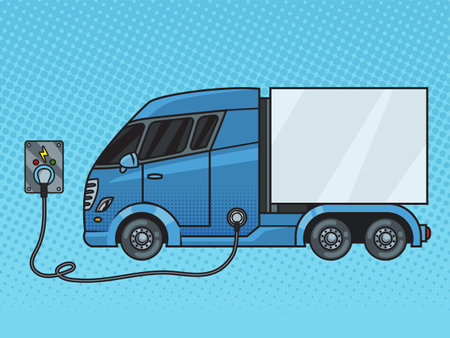1. Understanding the UK’s Drive Towards Greener Motoring
Over the past decade, Britain has firmly positioned itself at the forefront of climate action, with ambitious targets that seek to achieve net-zero carbon emissions by 2050. Central to this vision is a sweeping transition away from fossil fuel-powered vehicles towards cleaner alternatives, most notably electric vehicles (EVs). The government’s plan to phase out new petrol and diesel cars by 2035 underscores just how serious the UK is about transforming its roads and reducing personal carbon footprints. For British motorists, this shift isn’t simply about compliance—it’s a reflection of growing public sentiment that values environmental responsibility as a core part of modern life. As more people become aware of their own contribution to climate change, the focus has shifted from large-scale industrial emissions to individual choices and daily routines. This collective drive is not only reshaping policies but also steering consumer behaviour, making sustainable motoring a top priority in homes across the country.
2. How Home Charging Works for British EV Drivers
Home charging is swiftly becoming the default choice for electric vehicle (EV) owners across the UK, thanks to its convenience, cost savings, and contribution to a lower carbon footprint. For British drivers, understanding the typical setup and available options can help maximise both environmental benefits and running cost savings.
Typical Home Charging Setup in the UK
The majority of UK EV owners opt for a dedicated home charge point rather than relying on a standard three-pin plug. These wall-mounted units are typically installed on a driveway or in a garage by certified electricians and connect directly to your homes electricity supply. Most home chargers operate at 7kW, providing faster charging compared to a regular socket (usually limited to 2.3kW). This allows most EVs to fully recharge overnight, ready for the next day’s commute.
Connection Types: Tethered vs Untethered
| Connection Type | Description | Common Use |
|---|---|---|
| Tethered | Charger comes with an integrated cable (usually Type 2) | Most popular for home use due to ease of use |
| Untethered | User provides their own cable; charger has a socket only | Preferred by those with multiple vehicles using different connectors |
Smart Charging Technology
Modern home charge points increasingly offer smart features that enable users to schedule charging sessions, monitor energy usage via apps, and even integrate with home solar panels. Smart charging not only helps optimise charging times for lower emissions but also maximises energy cost efficiency.
Off-Peak Tariffs from British Energy Suppliers
A key trend in the UK is the uptake of off-peak or “time-of-use” tariffs offered by major suppliers such as Octopus Energy, Ovo Energy, and British Gas. These tariffs incentivise charging during periods of lower grid demand—typically overnight—when electricity is cheaper and greener due to a higher mix of renewables.
| Supplier | Tariff Name | Off-Peak Hours | Estimated Cost per kWh (Off-Peak) |
|---|---|---|---|
| Octopus Energy | Octopus Go | 00:30 – 04:30 | ~7.5p |
| Ovo Energy | Charge Anytime | Varies (Dynamic) | ~7p |
| British Gas | Evolve EV Tariff | 00:00 – 05:00 | ~9p |
The Bottom Line for British Drivers
A well-chosen home charging setup, combined with smart scheduling and an appropriate tariff, empowers UK EV owners to shrink their carbon footprint while cutting motoring costs—a win-win as Britain transitions toward net zero.

3. Environmental Impact: Home Charging vs Public Charging
When evaluating the true environmental benefits of electric vehicles in the UK, its crucial to distinguish between home charging and public charging in terms of carbon footprint reduction. Recent statistics from the Department for Business, Energy & Industrial Strategy (BEIS) indicate that the average grid carbon intensity in the UK has dropped significantly, thanks to a growing share of renewables like wind and solar. This makes home charging—especially when paired with a green energy tariff or domestic solar panels—a leading choice for minimising emissions.
Home Charging with Renewables: A Clear Winner
Charging your EV at home using 100% renewable electricity can reduce associated carbon emissions to nearly zero. According to the latest government data, over 40% of UK households now have access to green tariffs, and those who utilise such options can save up to 1.5 tonnes of CO₂ per vehicle per year compared to petrol cars. Even without a dedicated green tariff, off-peak home charging typically results in lower emissions due to higher renewable input during these times.
Public Charging: Mixed Results
Public charging networks across Britain are expanding rapidly, but not all offer low-carbon energy. While some rapid chargers source renewable electricity, others still rely on standard grid supply, which may include fossil fuels. The average carbon saving from public charging is therefore more variable—ranging from excellent (with green-sourced networks) to moderate when compared with domestic home charging setups.
Comparative Statistics
The latest figures show that home charging can cut an EV’s lifecycle emissions by as much as 25% compared with regular use of public chargers that aren’t guaranteed renewable. For context, a typical EV charged exclusively at home with renewables emits less than 20g CO₂/km on a well-to-wheel basis, compared with around 70g CO₂/km for non-renewable public charging sources. This gap underscores the vital role British households play in driving down national transport emissions simply by plugging in at home.
4. Cost and Convenience: The Real Benefits for UK Households
When considering the adoption of home EV charging in the UK, the dual pillars of cost-effectiveness and convenience play pivotal roles. For many British households, understanding the real-world savings and practicalities is key to making the switch to electric motoring not just environmentally sound, but economically sensible too.
Cost Breakdown: Home Charging vs. Public Charging
The average cost per kilowatt-hour (kWh) at home is significantly lower than at public rapid chargers. Factoring in the British energy price cap and off-peak tariffs, charging at home can deliver substantial savings over time. Below is a comparative breakdown:
| Charging Option | Average Cost per kWh | Estimated Full Charge (40kWh battery) |
|---|---|---|
| Home (Standard Tariff) | £0.28 | £11.20 |
| Home (Off-Peak Tariff) | £0.12 | £4.80 |
| Public Rapid Charger | £0.69 | £27.60 |
Government Grants & Incentives
The UK government supports home EV charging through schemes such as the Electric Vehicle Homecharge Scheme (EVHS), which offers grants of up to 75% off installation costs (capped at £350). Local councils may also provide additional incentives, making it even more affordable for homeowners.
Convenience Drives Adoption Rates
The ability to charge overnight, wake up to a full battery, and avoid queuing at public chargers is a significant motivator for British drivers. According to recent data, households with access to home charging are three times more likely to adopt an electric vehicle compared to those reliant solely on public infrastructure. In densely populated urban areas—where on-street parking dominates—the lack of convenient home charging remains a barrier, highlighting regional disparities in adoption rates.
The Bottom Line for UK Households
With energy price caps in place and generous grants available, home charging presents a financially attractive proposition for most UK drivers. Coupled with unmatched convenience and time-saving benefits, its clear why home charging is accelerating the nations transition towards a lower carbon footprint.
5. Overcoming Barriers: Addressing Common UK Challenges
While the benefits of home charging are clear, British homeowners often face unique challenges that set the UK apart from other countries. One of the most significant obstacles is the prevalence of terraced housing and properties without private driveways—a common sight in many urban and suburban neighbourhoods. For these households, installing a dedicated home charging point may not be feasible, raising concerns over accessibility and convenience for electric vehicle (EV) adoption.
Terraced Housing: A British Reality
The classic British terrace, with its limited or non-existent off-street parking, poses a real hurdle for would-be EV owners. Without a driveway, running a cable across public pavements is both unsafe and illegal, making traditional home charging setups impractical for millions.
Lack of Driveways: More Than an Inconvenience
According to recent statistics, nearly 40% of UK households lack access to off-street parking. This means a significant proportion of the population cannot take advantage of standard home chargers, which in turn risks slowing down national progress towards net zero goals.
Innovative Solutions: Charging Beyond Your Front Door
The good news is that solutions are emerging to bridge this gap. Local councils and private firms are rolling out on-street charging infrastructure—think lamppost chargers and bollard-style points—which blend seamlessly into the streetscape while providing essential access for residents without driveways. Community charging schemes are also gaining traction, enabling neighbours to share charging facilities or use bookable communal charge points within walking distance.
Looking Forward: Policy and Partnership
Government grants and partnerships with energy providers are helping to fund these initiatives, ensuring that no household is left behind in the transition to cleaner transport. As these programmes expand, the hope is that every Briton—regardless of their postcode or property type—will have practical options to reduce their carbon footprint through convenient EV charging at or near home.
6. The Path Forward: Home Charging and Britain’s Sustainable Future
As we look ahead, it is clear that home charging will play a pivotal role in helping the UK achieve its ambitious carbon reduction targets. By enabling drivers to charge their electric vehicles (EVs) with low-carbon electricity, especially during off-peak hours or when renewable generation is high, home charging directly supports the nation’s net zero agenda. However, the journey does not stop at simply installing a charger at home. Emerging technologies such as smart charging systems, vehicle-to-grid integration, and dynamic tariffs are set to further optimise how and when we use electricity for transport. For instance, smart chargers can automatically adjust charging times to coincide with periods of surplus wind or solar power on the grid, making your EV even greener. Moreover, government incentives and evolving infrastructure are making it easier for more Britons to adopt these solutions. To maximise environmental benefits, individuals can pair home charging with solar panels or participate in demand response schemes that reward flexible energy use. Ultimately, by embracing these innovations and making conscious choices about energy consumption, Britons have an opportunity not only to reduce their personal carbon footprint but also to contribute collectively to a cleaner, more sustainable future for the UK.


